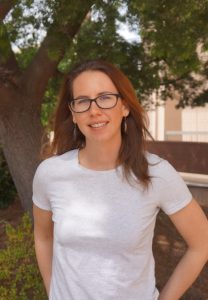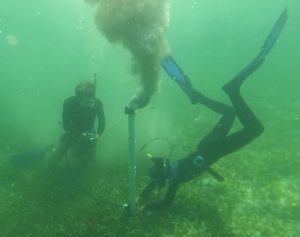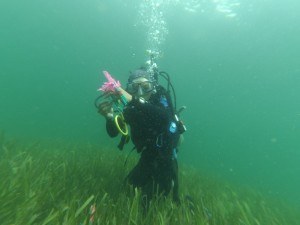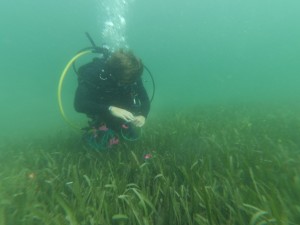The Peterson Marine Community Ecology Lab is seeking to interview and select eight to ten (8 – 10) highly motivated volunteer research assistants for summer 2019 to work on several dissertation and monitoring projects. Research hours can be used towards research credit hours with Dr. Bradley Peterson. (High school students, please take note: the minimum age to be considered for a volunteer position with us is 17).
Volunteers will be asked to commit at least two full days per week from late May/June through August. Exact starting and end dates are negotiable.
We specifically look for people who are comfortable and enjoy being outdoors, especially in the field on boats and in the water. Volunteers should be in good physical shape and enjoy hands-on work. Ability to swim is a requirement. Certified divers are strongly encouraged to apply.
If interested, please send your CV/resume and a list of available meeting times to Dylan Cottrell and Stephen Heck (dylan.cottrell@stonybrook.edu, heck.stephen@gmail.com). Please note that it is unlikely that you will work exclusively on one project, though you might work primarily on one or two. We think that exploring a variety of research questions and methods is essential to your scientific development!
Summer Research Topics:
Steve Heck: predator-prey interactions among fish, crabs, and bivalves
Steve will be researching how black sea bass influence trophic cascades that govern the survival of bivalves such as blue mussels and bay scallops. Experiments will be conducted primarily in the field in Shinnecock Bay, NY.
Alyson Lowell: seagrasses and ocean acidification
I am interested in how seagrasses respond to changes in carbonate chemistry. Fossil fuel emissions are increasing CO2 in the water column and, as such, are disrupting carbonate chemistry worldwide resulting in ocean acidification. Seagrasses are primary producers utilizing CO2 as their primary substrate for metabolism and are hypothesized to provide refuge in an acidified world. I will be using a series of laboratory and field techniques to elucidate how seagrasses will respond to ocean acidification and if their photosynthetic machinery is powerful enough to provide refuge in an acidified world.
Dylan Cottrell: seagrass productivity
Dylan will be researching the how various stressors (light limitation, epiphyte growth, nutrients, and temperature) effect the productivity of seagrass. This research has a spatial component, meaning research will be conducted in Peconic, Shinnecock, and Great South Bay. Dylan will also be working on a pilot study of juvenile fish recruitment throughout Shinnecock Bay and offshore artificial reefs. Dylan’s research is almost entirely field-based which means he’s out on the water 2-3 days a week. Field work consists of measuring productivity/epiphyte loads, maintaining grazer exclusion plots, and identifying/quantifying juvenile fish. You will learn how to do all this, plus have a chance to regularly snorkel/SCUBA in seagrass beds throughout Long Island (not to mention get some boating experience!).
Other Monitoring and Research
The lab will be deploying eelgrass- and shellfish-based restoration projects and conducting assessments of water quality, seagrass, and fauna in Great South Bay and Shinnecock Bay. For example, the Peterson lab conducts benthic surveys for the Shinnecock Bay Restoration Program (ShiRP).
We hope to hear from you soon!





